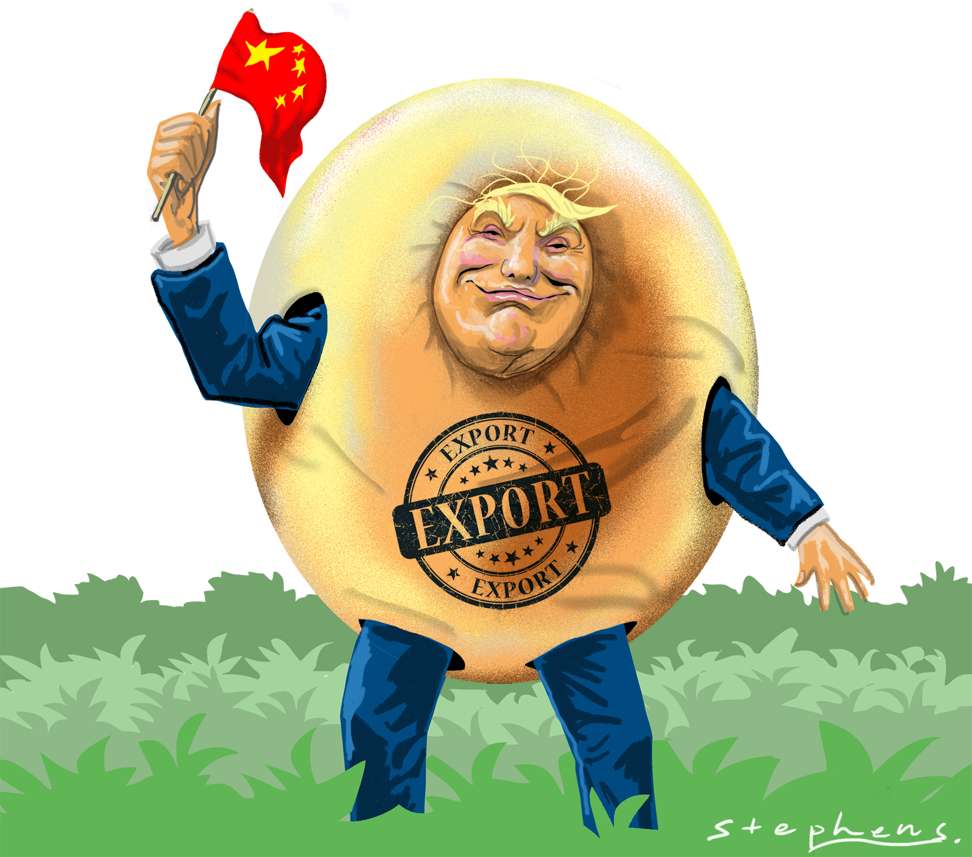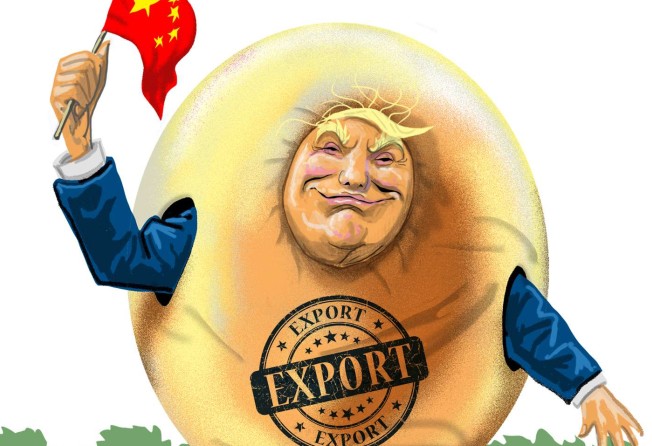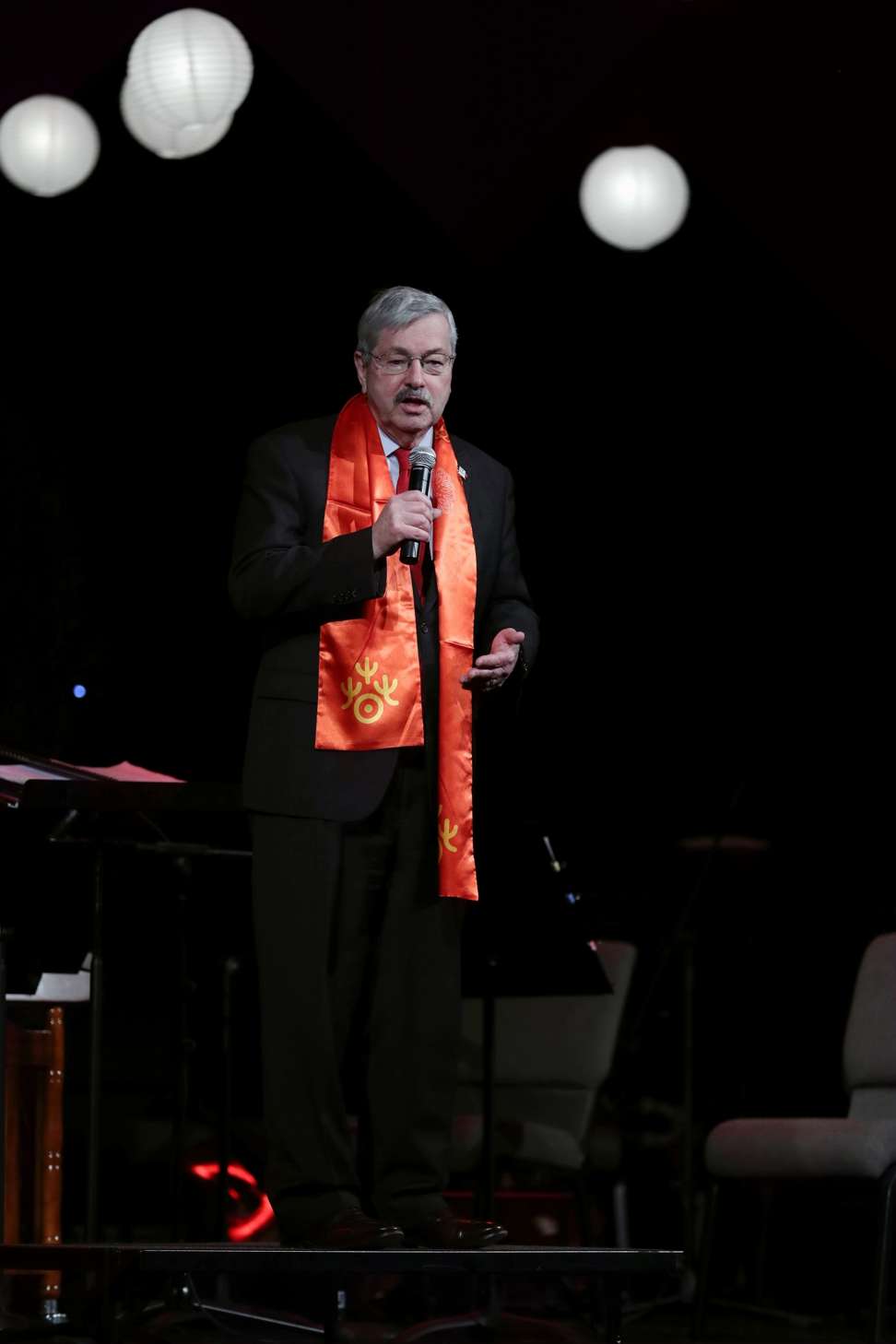
From tea to soybeans, trade ensures China and the US are inextricably linked
Patrick Mendis says the history of trade between China and the US cannot be ignored in any study of the state of the bilateral relationship today


Like most of the founding generation, Benjamin Franklin was a habitual tea drinker. He estimated that “a million of Americans drink tea twice a day” either in the morning at home, socially in the afternoon, or in the evening after dinner. In the last quarter of the 18th century, Americans consumed more than one billion cups of tea annually – close to two cups per person each day.

Some 240 years later, a “Trump revolution” appears to have begun with soybeans. President Donald Trump’s “America first” campaign slogan resonated with the rural hinterland communities neglected by the Washington elite and New York financiers. This hinterland electorate has largely resided in the soybean-growing triangle region of upper Midwestern states from the Corn Belt of the Dakotas, Iowa and Nebraska, to Pennsylvania and down into the Mississippi Delta.
In a complete role reversal, China is now fascinated by all things American
In a complete role reversal, China is now fascinated by all things American. Over the past three decades, China has emerged as the largest importer of American soybeans with more than 1 billion bushels last year. The US Department of Agriculture estimated that China imported only about 18 million bushels of soybeans in the mid-1990s. Since then, the Chinese appetite has rapidly increased, making soybeans the leading export industry in the US hinterland, followed by Boeing planes, recyclable materials and automobiles.
Recognising the demographics of his support base, Trump appointed Iowa governor Terry Branstad to be his ambassador to China. It was a strategic move to “open significant opportunities for Iowa and US businesses and farmers”, as China is the leading importer of Iowa agricultural products, especially soybeans and pork.
Trump praised Branstad’s success in developing close trade ties with China while serving as governor of Iowa and said “he represents America’s interests and further develops a mutually beneficial relationship with China’s leadership”.
On his part, Branstad said, “I’ve known President Xi Jinping for many years and consider him an old friend”. Xi visited Iowa and stayed with a farming family in 1985.

On a map, Trump’s voter support base corresponds to the soybean growing region. In a Time magazine article, the authors analysed the county-level results that “show stunning shifts in Trump’s favour through the upper Midwest and Northeast [extending from Iowa and Illinois to Pennsylvania and Maine], demonstrating the success of his trade and economic message in the nation’s heartland”.
This geospatial footprint of Chinese demand for American soybeans, especially for animal feed and cooking oil, led to an increase in investment in the domestic agribusiness sector.
President Barack Obama’s secretary of agriculture Tom Vilsack has enthusiastically endorsed the new envoy to China. Both Trump and Branstad must “have patience” in dealing with America’s largest agricultural import partner, advised Vilsack, who was also a former governor of Iowa. He added that the Obama administration had been “talking with our Chinese friends for quite some time about biotechnology approvals, about resuming US beef exports to China, and other issues that haven’t been easy”. “We’ve made progress but there is more work to be done,” he said.
Like Vilsack, Branstad understands the value of the China connection for US trade expansion, job creation and income generation for Trump’s voters. “Farmers understand trade because it impacts their bottom line,” Vilsack explained.
As a businessman, Trump also recognises the importance of China – even as he has maligned China in his campaign speeches and interviews. He has incurred enormous loans from the Bank of China while the Trump Tower houses the US headquarters of the Industrial and Commercial Bank of China.
“I love China!” he said at the start of his campaign in June 2015 at the Trump Tower. “The biggest bank in the world is from China. You know where their United States headquarters is located? In this building, in Trump Tower.”
As president, Trump now realises the trilemma of safeguarding his voters who depend on American exports, proposing a 45 per cent tariff on Chinese imports that risks potential retaliation by Beijing, and finally, continuing trade with China that would benefit his family and business associates. Balancing these three conflicting frontiers of national and personal interests is a formidable challenge for the businessman-turned-politician, who now needs to work on the complexities of global geopolitics within the equally powerful three branches of the US government.
Understanding an assertive China and complicated geo-economics, Jared Kushner, a senior adviser to the president and husband of his daughter Ivanka, reportedly met Chinese ambassador Cui Tiankai ( 崔天凱 ) privately in Washington last month.
Arabella singing a song she learned for #ChineseNewYear. Wishing everyone an amazing year to come during these days of celebration. 新年快乐! pic.twitter.com/jxHHLvhmzm
— Ivanka Trump (@IvankaTrump) February 2, 2017
Soon after, the White House sent a carefully worded letter to Beijing, saying Trump was looking forward to developing a “constructive relationship” with President Xi Jinping (習近平).
In an “extremely cordial” follow-up phone conversation, Trump told Xi that he now “agrees to honour the ‘one China’ policy”, after he angered Beijing by accepting a controversial call from the president of Taiwan, which Beijing considers a breakaway province.
It seems that Trump’s China-bashing campaign “headlines” are now giving way to the forgotten “trend line” of a historical trade with China that began with tea.
In colonial America, the ginseng and fur industries connected the rural farmland and hinterland with the coastal metropolises of Boston, New York and other Atlantic port cities. The US is now inextricably linked with China in almost every sector of the American economy and foreign policy.
In all this, an asymmetrical Sino-US relationship still exists in the macroeconomic environment and trade policy framework – including currency exchange, debt service, market access and corporate competition.
As Xi announced at the Sunnylands summit with Obama in 2013, a “new type of major-power relationship” will eventually be required for relations to move forward within the evolving structure of over 100 bilateral dialogues between the two.
As China quietly leads the way, a subdued Trump White House has decided to open a pathway for a “cooperative relationship” with China. Hopefully, Trump will elevate the bilateral relationship from colonial America’s “cause of freedom” to a “cause of prosperity” for the benefit of the two nations and the world.
Patrick Mendis is an associate-in-research of the Fairbank Centre for Chinese Studies at Harvard University in Boston, a senior fellow of the Pangoal Institution in Beijing, and a distinguished visiting professor of Asian-Pacific Affairs at Shandong University in Jinan
